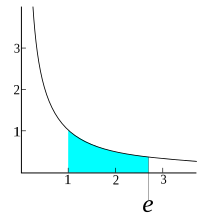
Aluminum based reflective nanolens arrays to improve the effectiveness of ultraviolet inactivation of Escherichia coli O157:H7 and Listeria monocytogenes in water and a sucrose solution
Sign Up to like & getrecommendations! Published in 2020 at "Food Science and Biotechnology"
DOI: 10.1007/s10068-020-00765-z
Abstract: Aluminum based reflective nanolens arrays were developed via a series of aluminum electropolishing and anodization steps with subsequent selective dissolution of anodic aluminum oxide (AAO). The diameter of nanolenses (d) on arrays can be controlled… read more here.
Keywords: aluminum based; aluminum; based reflective; nanolens arrays ... See more keywords

Effect of ohmic heating on electrochemical-thermal parameters and inactivation of Escherichia coli of well water drinkable
Sign Up to like & getrecommendations! Published in 2021 at "Innovative Food Science and Emerging Technologies"
DOI: 10.1016/j.ifset.2021.102786
Abstract: Abstract The effect of voltage gradient (15–30 V/cm) and holding time (45–150 s) were evaluated on electrode corrosion, energy consumption, thermal performance, pH change, electrical conductivity and inactivation of Escherichia coli in the well water during ohmic… read more here.
Keywords: coli well; inactivation escherichia; well water; escherichia coli ... See more keywords

Combined effect of shear stress and moderate electric field on the inactivation of Escherichia coli K12 in apple juice
Sign Up to like & getrecommendations! Published in 2019 at "Journal of Food Engineering"
DOI: 10.1016/j.jfoodeng.2019.05.019
Abstract: Abstract The effectiveness of combined shear stress (SS) and moderate electric field (MEF) on the inactivation of Escherichia coli K12 in apple juice was investigated. Inoculated samples were treated at two temperatures (40 °C and 50 °C)… read more here.
Keywords: field; stress moderate; moderate electric; inactivation escherichia ... See more keywords

Transient photothermal inactivation of Escherichia coli stained with visible dyes by using a nanosecond pulsed laser
Sign Up to like & getrecommendations! Published in 2020 at "Scientific Reports"
DOI: 10.1038/s41598-020-74714-5
Abstract: Efficient inactivation of Escherichia coli (E. coli) under visible (532 nm) pulsed light irradiation was achieved by fusion of a visible light-absorbing dye with E. coli. Inactivation experiments showed that 3-log inactivation of E. coli… read more here.
Keywords: escherichia coli; coli; inactivation; transient photothermal ... See more keywords

Efficient photocatalytic inactivation of Escherichia coli by Mn-CdS/ZnCuInSe/CuInS2 Quantum Dots-Sensitized TiO2 nanowires.
Sign Up to like & getrecommendations! Published in 2020 at "Nanotechnology"
DOI: 10.1088/1361-6528/ab8d6c
Abstract: A novel visible light-driven photocatalyst (represented as Mn-CdS/ZCISe/CIS/TiO2) for the inactivation of Escherichia coli (E. coli) was prepared with TiO2 nanowires as support and CuInS2 (CIS), ZnCuInSe (ZCISe) quantum dots (QDs), and Mn-doped CdS (Mn-CdS)… read more here.
Keywords: escherichia coli; tio2 nanowires; cuins2; inactivation ... See more keywords

Inactivation of Escherichia coli by atmospheric pressure plasma jet in water.
Sign Up to like & getrecommendations! Published in 2022 at "Journal of water and health"
DOI: 10.2166/wh.2022.011
Abstract: The main aim of this work is inactivation of Escherichia coli in water using a laboratory-scale radio-frequency atmospheric pressure Argon plasma jet. This bacterium is widely present in the environment, especially in drinking water, and… read more here.
Keywords: inactivation escherichia; plasma; water; plasma jet ... See more keywords

Inactivation of Escherichia coli in an Orange Juice Beverage by Combined Ultrasonic and Microwave Treatment
Sign Up to like & getrecommendations! Published in 2023 at "Foods"
DOI: 10.3390/foods12030666
Abstract: The inactivation of Escherichia coli is one of the major issues in the food industry. The present study focuses on the application of a combined microwave-ultrasound system for the optimization of the inactivation of Escherichia… read more here.
Keywords: inactivation escherichia; time; escherichia coli; microwave treatment ... See more keywords